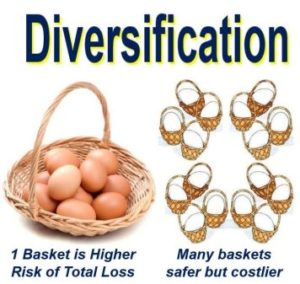Investing with Style

Investing with Style
How do you define your approach to investing? There may be many answers to that question. One answer goes to the style of investing that you choose: value or growth. Are you looking for value? The goal of a value investor is to seek out “bargains,” finding those companies whose stock may be out of favor for one reason or another and whose stock is inexpensive relative to the company’s earnings or assets. Value investors are looking for companies that have shown low or no sales growth, have little corporate debt and experience below-average earnings increases.
It’s often said that patience is a key attribute of the value investor. By its very nature, value investing means being able to sit back and wait. The belief is that other investors soon will draw the same conclusions about a company’s potential and bid up the stock price. While the value investor waits, he or she still may receive some reward: Value stocks typically have an above-average dividend yield.
Are you seeking growth?
For growth investors, it’s a matter of expectations. Growth investors are on the lookout for companies whose sales and earnings are expected to grow steadily. Because a profitable company rarely goes unnoticed, growth stocks generally are not inexpensive. However, given the appreciation potential that they see, growth investors are willing to pay the premium involved.
The companies whose shares fall within the growth style are those: whose sales growth is greater than that of their competitors; that usually have incurred major debt for expansion, and that usually will deliver little in the way of dividends. They have high earnings per share and high price/earnings and price/book ratios.
Because their appreciation usually is based upon earnings announcements, share prices of growth stocks tend to fluctuate rapidly. But, despite volatility, a good growth stock will report steadily growing earnings. The growth investor’s challenge, of course, is to buy early enough, not sell off the winners too early, and not hang on to the losers too long.
Style drift
A stock identified as either “growth” or “value” need not retain that characteristic forever. Over time stocks may drift from one category to the other as their fortunes change. As that happens, a portfolio inadvertently may drift from one style to the other. The significant variability of the investment returns between these two styles suggests that “style diversification” may be appropriate or, at least, that style should be one of the metrics by which an investment portfolio is measured periodically.
A combination of styles?
History shows that the market does not tend to favor one style of investing over another for very long. Both growth and value have had their day in the sun.
It isn’t necessary to choose one style over the other. There are ways to build your portfolio in a manner that combines value and growth stocks in a proportion with which you can be comfortable. In other words, you can think of not one style versus the other but, rather, of the styles falling across a spectrum. In that manner, you stand the best chance of taking maximum advantage of the market’s changing preferences.
We can help you find where you want to be along that spectrum. Just give us a call to set up an appointment.
We hope you found this article about “Investing with Style” helpful. If you have questions or need expert tax or family office advice that’s refreshingly objective (we never sell investments), please contact us or visit our Family office page or our website at www.GROCO.com. Unfortunately, we no longer give advice to other tax professionals gratis.
To receive our free newsletter, contact us here.
Subscribe our YouTube Channel for more updates.

Alan Olsen, is the Host of the American Dreams Show and the Managing Partner of GROCO.com. GROCO is a premier family office and tax advisory firm located in the San Francisco Bay area serving clients all over the world.
Alan L. Olsen, CPA, Wikipedia Bio

GROCO.com is a proud sponsor of The American Dreams Show.

The American Dreams show was the brainchild of Alan Olsen, CPA, MBA. It was originally created to fill a specific need; often inexperienced entrepreneurs lacked basic information about raising capital and how to successfully start a business.
Alan sincerely wanted to respond to the many requests from aspiring entrepreneurs asking for the information and introductions they needed. But he had to find a way to help in which his venture capital clients and friends would not mind.
The American Dreams show became the solution, first as a radio show and now with YouTube videos as well. Always respectful of interview guest’s time, he’s able to give access to individuals information and inspiration previously inaccessible to the first-time entrepreneurs who need it most.
They can listen to venture capitalists and successful business people explain first-hand, how they got to where they are, how to start a company, how to overcome challenges, how they see the future evolving, opportunities, work-life balance and so much more..
American Dreams discusses many topics from some of the world’s most successful individuals about their secrets to life’s success. Topics from guest have included:
Creating purpose in life / Building a foundation for their life / Solving problems / Finding fulfillment through philanthropy and service / Becoming self-reliant / Enhancing effective leadership / Balancing family and work…

MyPaths.com (Also sponsored by GROCO) provides free access to content and world-class entrepreneurs, influencers and thought leaders’ personal success stories. To help you find your path in life to true, sustainable success & happiness. It’s mission statement:
In an increasingly complex and difficult world, we hope to help you find your personal path in life and build a strong foundation by learning how others found success and happiness. True and sustainable success and happiness are different for each one of us but possible, often despite significant challenges.
Our mission at MyPaths.com is to provide resources and firsthand accounts of how others found their paths in life, so you can do the same.
Introducing the “Total Return” Trust
Introducing the “Total Return” Trust The fundamental purpose of most trusts is to create a plan of financial protection for more than one beneficiary, often beneficiaries in different generations. “All the trust income to my surviving spouse, with the balance to be divided among our children at her death” might be used in a marital…
Making Tax-wise Investments
Making Tax-wise Investments Tax considerations are not, and should never be, the be-all and end-all of investment decisions. The choice of assets in which to invest, and the way in which you apportion your portfolio among them, almost certainly will prove to be far more important to your ultimate results than the tax rate that…
Reducing Risk With a Diversified Portfolio
Reducing Risk With a Diversified Portfolio Have you been worried about the stock market’s recent volatility? You’re not alone. The stock market in March was a roller-coaster ride that served as a reminder to investors that the market’s ups and downs can be a little dizzying. But a volatile market should not leave you feeling…
Are You Defining Items in QuickBooks Correctly?
[vc_row][vc_column][vc_column_text] Create item records in QuickBooks carefully, and QuickBooks will return the favor by running useful, accurate reports. Figure 1: Clearly-defined items result in precise reports. Obviously, you’re using QuickBooks because you buy and/or sell products and/or services. You want to know at least weekly — if not daily — what’s selling and what’s…




